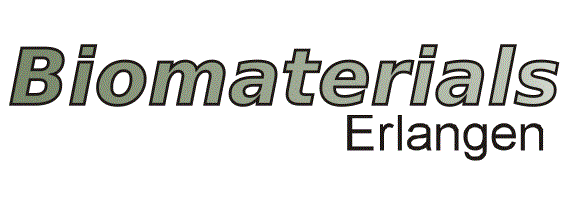Matthias Eckstein
Matthias Eckstein
Master Student
Bioplotting of different materials into complex geometries for tissue engineering
Betreuer: Dr. R. Detsch, Prof. A. R. Boccaccini
3D additive manufacturing (AM) technologies enable the production of complex structures and geometries in biofabrication by using a defined layer-by-layer deposition approach. Free design of geometries, scaffolds and accurate positioning of different materials and cell types are major advantages of bioplotting technologies [1]. In this regard, hard-soft-scaffolds mechanically supported by thermoplastic structures containing a biologically functionalised phase can be printed in order to tackle issues considering shape stability and cell response [2]. Moreover, free-forming of various geometries might be useful for optimization of the whole biofabrication process (e.g. individual bioreactor geometry for various scaffold sizes). This study focuses on the printing process of various complex geometries as tissue scaffolds. The constructs are analyzed in terms of mechanical stability, material composition, topography, pore size and porosity as well as hydrophilicity and degradation behaviour.
[1]Detsch, R., Sarker, B., Zehnder, T., Frank, G., Boccaccini, A.R.: Advanced alginate-based hydrogels – Hydrogels with specific surface structures for biofabrication applications. Materials Today (2015) Volume 18 (10), pp. 590-591. .
[2] Zehnder, T., Freund, T., Demir, M., Detsch, R., Boccaccini, A.R.: Fabrication of Cell-Loaded Two-Phase 3D Constructs for Tissue Engineering. Materials (2016) 9, 887 .

